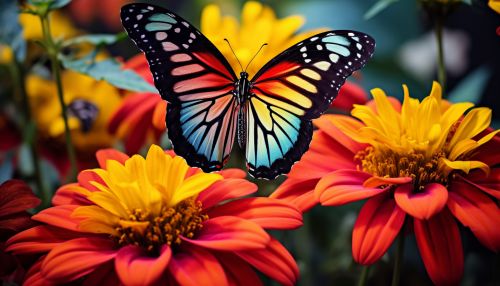The Ecology of Butterfly Diversity and Conservation
Introduction
Butterflies, members of the order Lepidoptera, are among the most vibrant and diverse groups of insects. Their diversity, both in terms of species richness and ecological roles, is a subject of ongoing research in the field of ecology. The conservation of butterflies is also a critical aspect of biodiversity preservation, as these creatures play vital roles in ecosystems, including pollination and serving as indicators of environmental health. This article explores the ecology of butterfly diversity and conservation in detail.


Butterfly Diversity
Butterfly diversity is a complex topic that encompasses various aspects, including species richness, genetic diversity, and ecological diversity.
Species Richness
Species richness refers to the number of different species within a particular area. Butterflies are incredibly diverse, with over 20,000 species worldwide. This diversity is not evenly distributed, with tropical regions, such as the Amazon, hosting the highest number of species.
Genetic Diversity
Genetic diversity within butterfly species is also a crucial aspect of their overall diversity. This diversity at the genetic level allows species to adapt to changing environmental conditions and resist diseases and pests.
Ecological Diversity
Ecological diversity refers to the variety of roles that butterflies play in ecosystems. Butterflies are not only pollinators but also serve as food for other species, contribute to nutrient cycling, and act as indicators of environmental health.
Butterfly Conservation
Butterfly conservation is a critical aspect of biodiversity preservation. The conservation of butterflies involves various strategies, including habitat preservation, captive breeding, and public education.
Habitat Preservation
Habitat preservation is perhaps the most crucial aspect of butterfly conservation. Many butterfly species are highly dependent on specific habitats, and habitat loss is a major threat to their survival.
Captive Breeding
Captive breeding programs can also play a role in butterfly conservation, particularly for species that are critically endangered. These programs involve breeding butterflies in controlled environments and then releasing them into the wild.
Public Education
Public education is another vital aspect of butterfly conservation. Educating the public about the importance of butterflies and the threats they face can help garner support for conservation efforts.
Challenges in Butterfly Conservation
Conservation of butterflies faces several challenges, including habitat loss, climate change, and lack of public awareness.
Habitat Loss
Habitat loss, often due to human activities such as deforestation and urbanization, is the most significant threat to butterfly diversity. Many butterfly species are highly specialized, relying on specific plant species for survival.
Climate Change
Climate change is another major threat to butterflies. Changes in temperature and precipitation patterns can affect butterfly life cycles and the availability of food resources.
Lack of Public Awareness
Despite their importance, butterflies are often overlooked in conservation efforts. Lack of public awareness about the importance of butterflies and the threats they face can hinder conservation efforts.
Conclusion
The diversity and conservation of butterflies are complex topics that encompass various aspects of ecology. Understanding these aspects is crucial for the preservation of these vibrant and essential creatures. Despite the challenges, ongoing research and conservation efforts offer hope for the future of butterflies.
